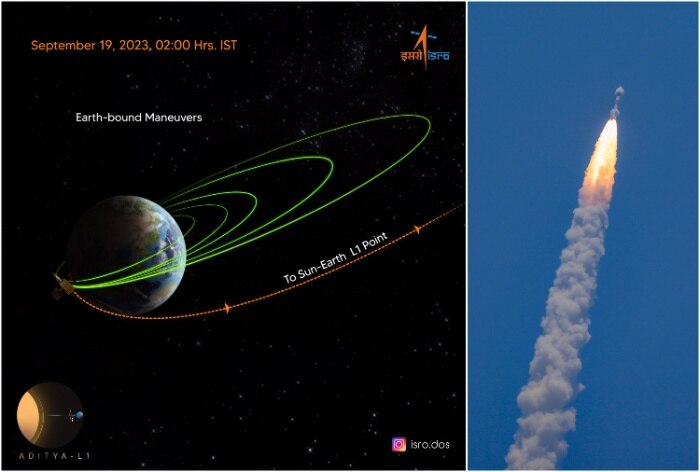The STEPS devices, part of the ASPEX payload aboard the Aditya L1 spacecraft has begun the study of energetic particles in the solar wind.

New Delhi: India’s highly-celebrated solar mission Aditya L1 has begun the study of energetic particles in the solar wind after starting its journey toward the Sun’s Lagrange point 1 following a key manoeuvre. A senior astrophysicist said the Aditya L1 has begun it’s study with the help of a device called Supra Thermal & Energetic Particle Spectrometer or ‘STEPS’, a part of the Aditya Solar wind Particle EXperiment (ASPEX) payload.
“STEPS is now working from space. However, it was not sitting idle earlier. It has started functioning from within the magnetic field of the Earth since September 10 when Aditya was 52,000 kilometres above our planet,” Dr Dibyendu Chakrabarty, professor of Space and Atmospheric Sciences at the Physical Research Laboratory (PRL) told news agency PTI.
He said the Aditya L1 will continue studying these particles for the rest of its life and beam the data back to mission control about the solar wind, the continuous flow of charged particles from the sun which permeates the solar system.
What is STEPS?
Developed by PRL with collaboration and support from the Ahmedabad-based Space Application Centre (SAC), STEPS aims to study the environment of energetic particles from the Aditya spacecraft’s position on the L1 point till the end of its life.
“During the travel time of four months (till Aditya L1 reaches its destination), it will study energetic particles in the solar wind. The data will help maintain the health and performance of our space assets in a better way,” Dr Chakrabarty said.
STEPS comprises six sensors, each observing in different directions and measuring supra-thermal and energetic ions. The data collected during the Earth’s orbits helps scientists to analyse the behaviour of particles surrounding the planet, especially in the presence of its magnetic field.
The data from STEPS in the long term will also help us understand how space weather changes,” the space scientist said.
The Aditya L1 Solar Mission
Launched by the Indian Space Research Organisation (ISRO) on September 2, the Aditya-L1, launched will go up to the First Lagrangian point, about 1.5 million km from the Earth.
“Off to Sun-Earth L1 point! The Trans-Lagrangian Point 1 Insertion (TL1I) manoeuvre is performed successfully. The spacecraft is now on a trajectory that will take it to the Sun-Earth L1 point.” ISRO wrote on X (former Twitter) on September 18.
Lagrangian points are where gravitational forces, acting between two objects, balance each other in such a way that the spacecraft can hover’ for a longer period of time.
The L1 point is considered the most significant of the Lagrangian points, for solar observations, which were discovered by mathematician Joseph Louis Lagrange.
(With PTI inputs)

